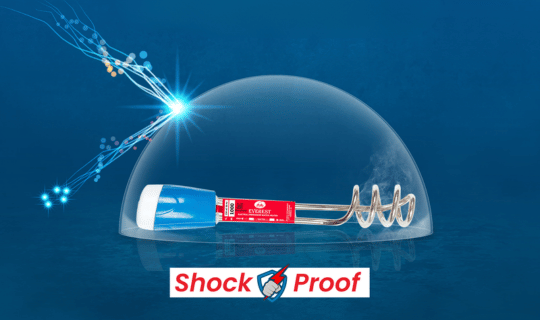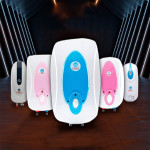5 Common Mistakes to Avoid When Using an Immersion Water Heater
An immersion water heater is one of the simplest and most affordable ways to heat water, especially in households where instant water heaters or geysers aren’t available. However, improper use might endanger safety in addition to causing harm to the equipment. At Everest Stabilizer, we believe in promoting safe and efficient usage of all electrical appliances. So here’s a detailed guide on the top 5 common mistakes to avoid when using an immersion water heater.
1. Using the Heater Without Proper Submersion
One of the most frequent and dangerous mistakes is turning on the immersion heater before it is fully submerged in water. When the coil is not completely covered, it may overheat rapidly and burn out. Worse, it can cause electric sparks or short-circuits. Always ensure the heating element is fully immersed in water before switching it on.
Tip: Mark the minimum water level required and never let the water fall below that mark during usage.
2. Plugging Directly Into Low-Quality Sockets
Many users plug their immersion heaters into sockets without checking if the wiring can handle the wattage load. Cheap or poorly wired sockets can lead to overheating, sparking, or melting of plugs. This can be hazardous, especially in bathrooms where water is present.
Solution: Use a reliable voltage stabilizer or heavy-duty extension board recommended by Everest Stabilizer to ensure consistent and safe power flow.
3. Leaving the Heater Unattended
It's tempting to turn on the immersion heater and walk away, especially when you're in a hurry. However, leaving the device unattended is a safety hazard. Overheating water can splash or boil over, and if the coil is exposed to air due to evaporation, it can burn out.
Advice: Always stay nearby and monitor the heating time. Most immersion heaters heat water within 10-15 minutes, depending on capacity.
4. Using the Heater in Plastic Buckets
While it may seem convenient, using an immersion water heater in low-grade plastic buckets can cause the plastic to warp or melt due to high temperatures. This not only damages the container but also poses a risk of burns or electric shock.
Recommendation: Use heat-resistant steel or thick-grade plastic buckets that are certified for electrical heating devices.
5. Improper Storage After Use
Once the heating is done, some users carelessly place the hot immersion rod on surfaces like tiles or concrete without letting it cool. This can damage the coil, reduce its lifespan, or even pose a fire hazard if it comes into contact with flammable materials.
What to Do: After unplugging, let the heater cool down by hanging it on a heat-resistant stand or hook. Never coil or store it while it's still warm.
Final Thoughts
Immersion water heaters are easy to use, but only when handled correctly. By avoiding these common mistakes, you can extend the life of your appliance, reduce power consumption, and ensure your safety. Always remember, a reliable voltage stabilizer like those offered by Everest Stabilizer can help protect your immersion heater from voltage fluctuations and overloads—adding a layer of protection to your daily routine.
Stay warm, stay safe—with Everest.





